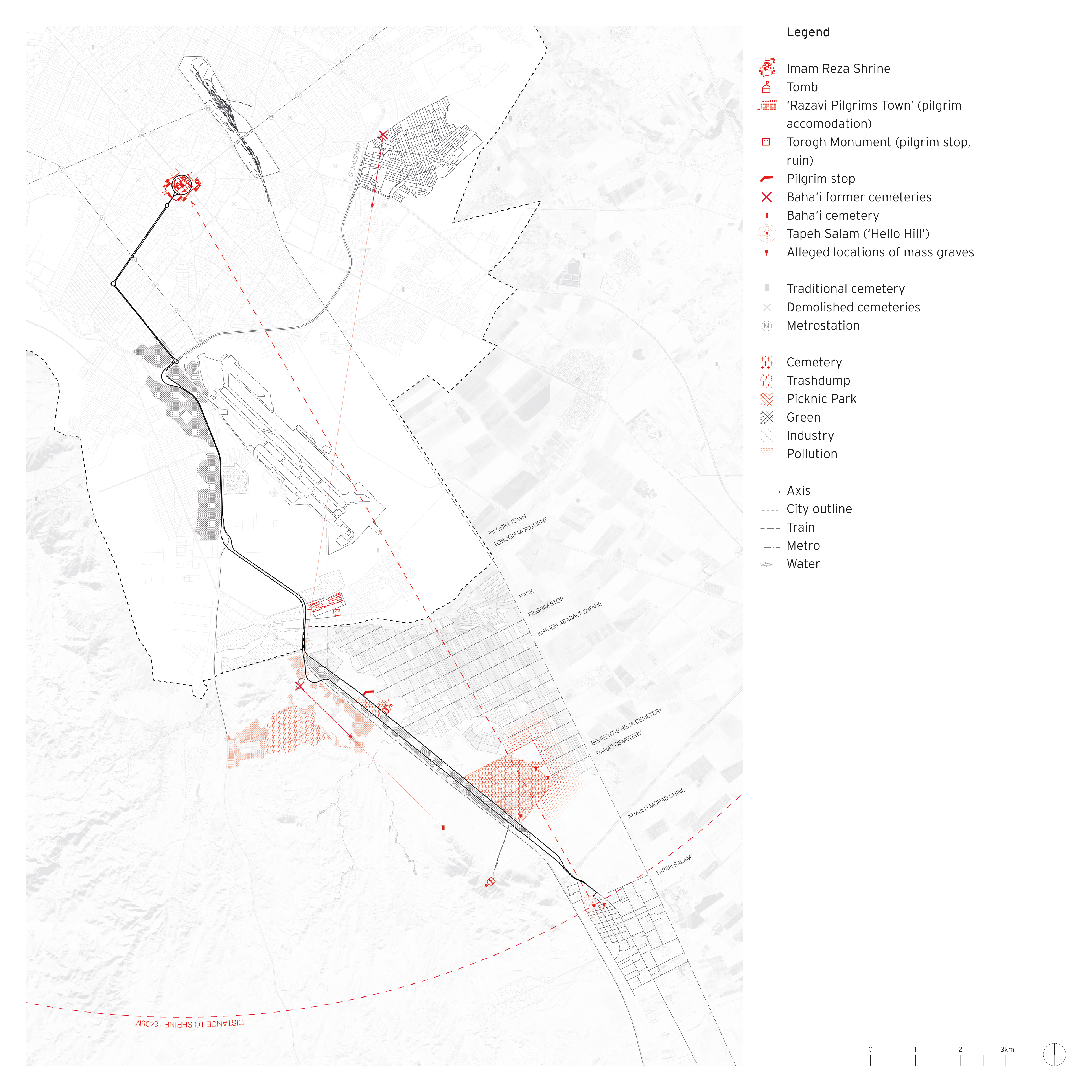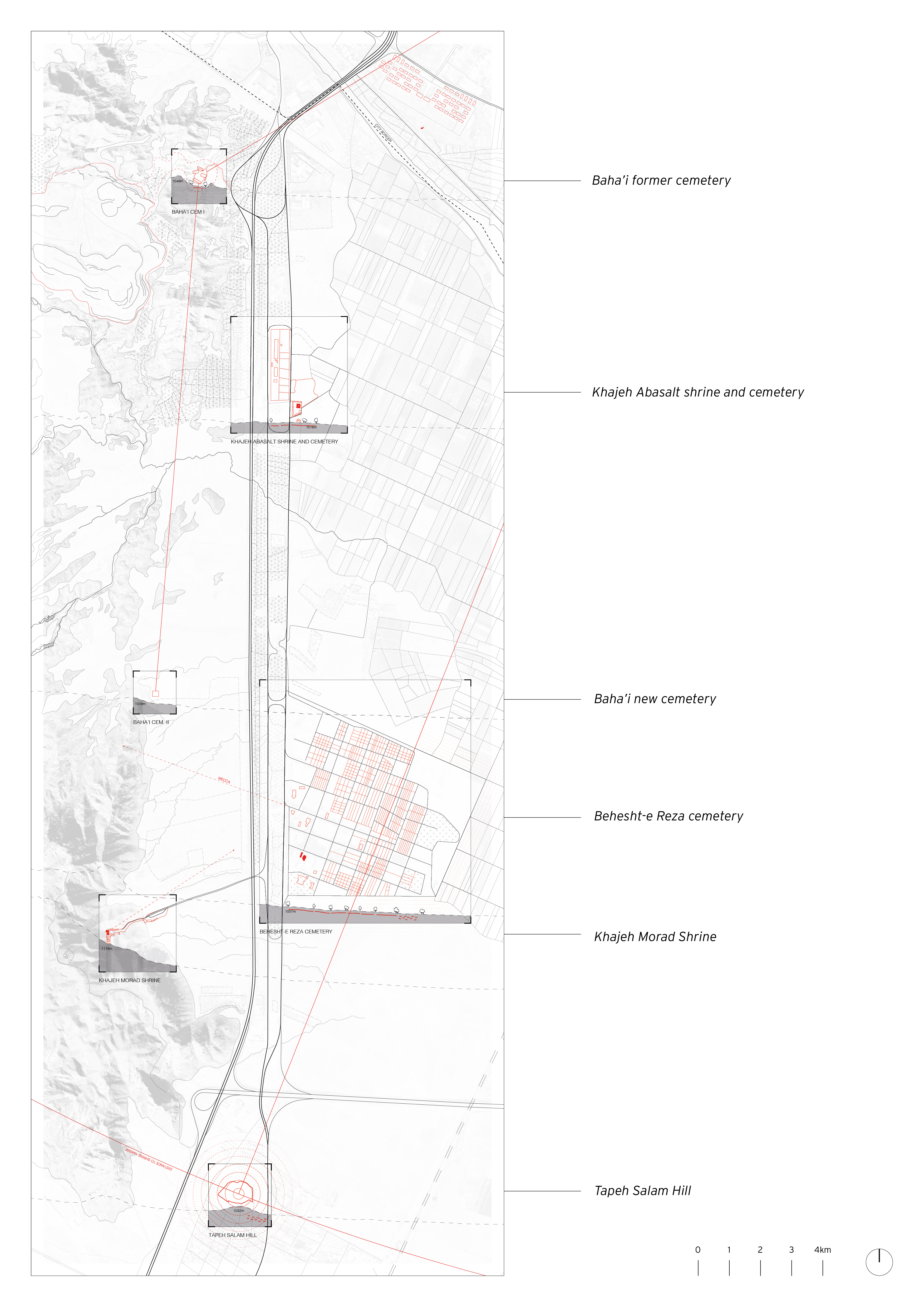TERRITORIES OF LIFE AND DEATH
Jesse Verdoes
The project investigates the peri-urban territory around the modern Behehst-e Reza Cemetery. This territory consists, next to other programs that are exiled from the city (agriculture, industry and the main landfill) of a multitude of different burial places stringed together by the linear highway that characterizes the site. Directly accessible from the highway, Behesht-e Reza forms an extension of the infrastructural network that takes people in and out of the city.


With the highway running across and the various adjacent burial places surrounding it, this death avenue can be compared to Via Appia Attica in Rome where the city was historically introduced to its visitors through the architecture of death. However, in the current situation at the outskirts of Mashhad, this architecture co-exists with the banalities of the suburban highway: its abundance of signs, littered gas stations, and remote fast-food restaurants. It is these two disparate architecture cultures, namely the banal, communicative and functional architecture of the urban outskirts in contrast to the honest and essentialist architecture of monuments, that characterize the territory.
The project is thus situated in a contested site that consists of decontextualized fragments displaced from the city. The amalgamation of these spaces for death with banal functionalities, contextualized by other suburban land uses makes for a site full of pressured co-existences and thereby full of potential.
Source: Giovanni Battista Piranesi. Appian Way. Etched print. Wikimedia. https://commons.wikimedia.org/wiki/File:Piranesi-3002.jpg; 
Denise Scott Brown. Robert Venturi, Las Vegas, Nevada. Photograph. Design upenn. November 1966. https://www.design.upenn.edu/events-exhibitions-0/events/celebration-robert-venturi.


